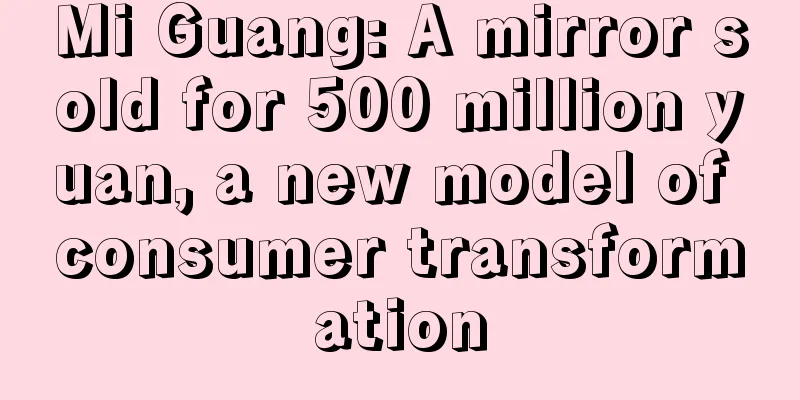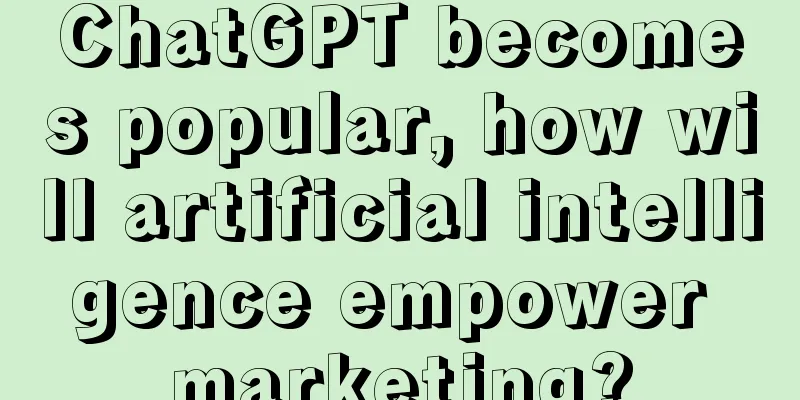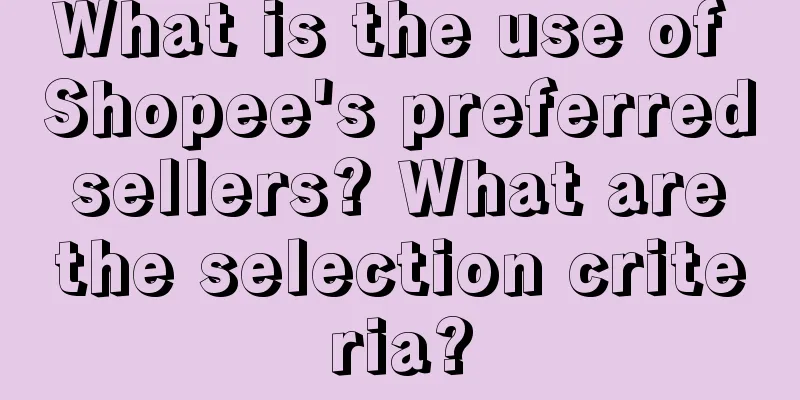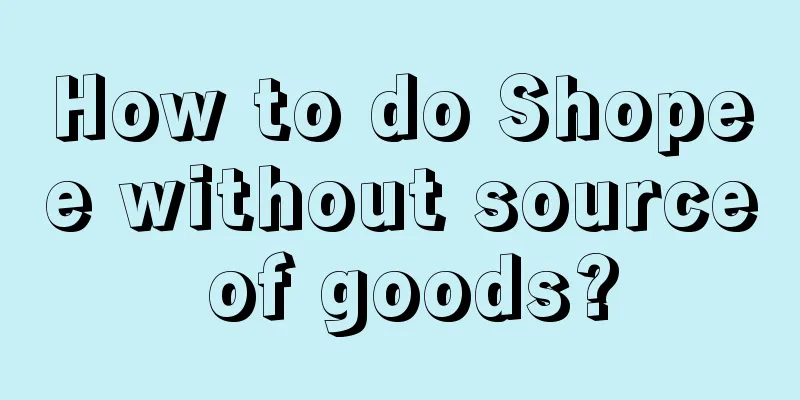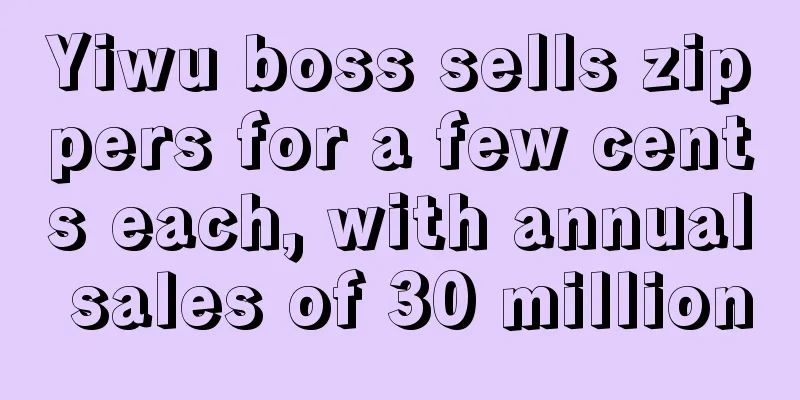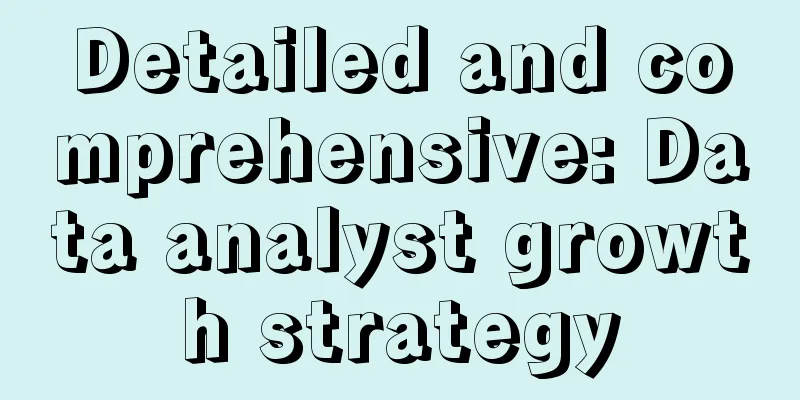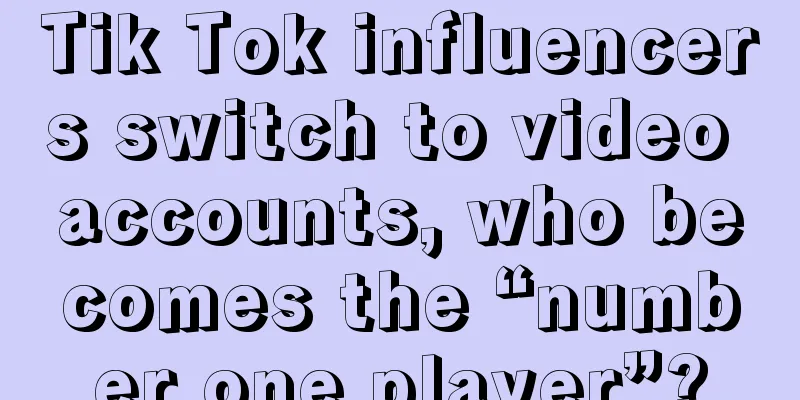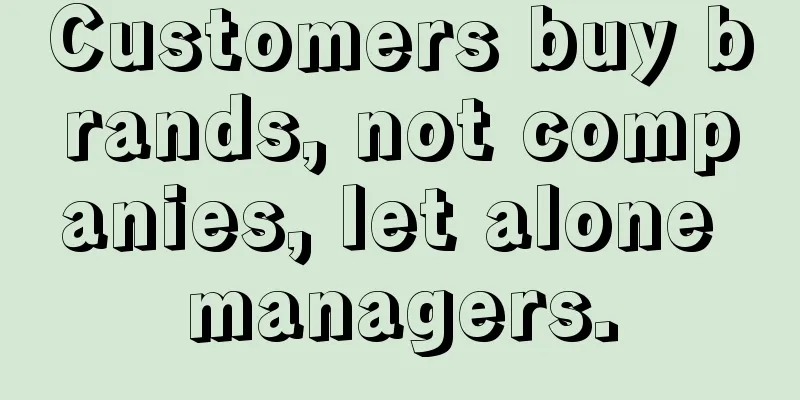Use "fast thinking" to fight the psychological battle of brand marketing
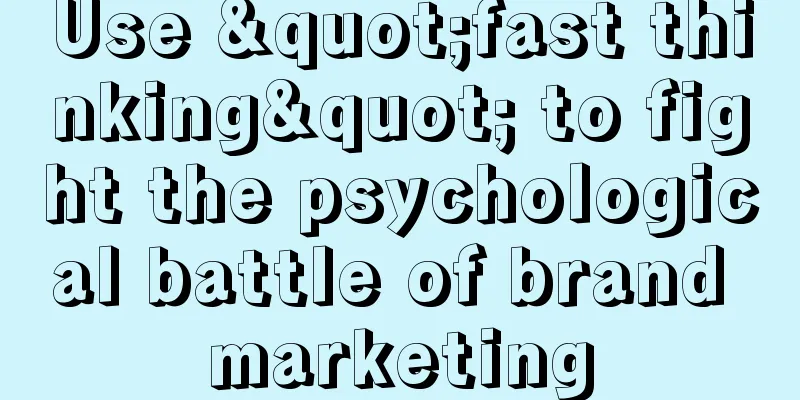
01What is the core issue of brand marketing? Brand communication? Sales promotion? Increasing repeat purchases? Gaining user loyalty? These answers are all correct, but how to do brand marketing well and achieve real results? To answer this question, we need to go back to the underlying discipline of branding: "Psychology" . In the book "Thinking, Fast and Slow" by Professor Daniel Kahneman, a Nobel Prize winner in Economics, Professor Kahneman divides human thinking into two systems, which can thoroughly explain the psychological mechanism behind the brand: System 1 operates unconsciously and quickly - not much brain power, no feeling, and completely under autonomous control. It can be called fast thinking. System 2 shifts attention to brain activities that require brain power, such as complex calculations. It can be called slow thinking. 02Let's take a scenario that often happens in daily life as an example: In the morning, you come to a breakfast shop. When you see the food, it may only take you a few seconds to decide what to eat for breakfast. For example, when you see the tempting fried dough sticks and fresh soy milk, you decide immediately. You are unlikely to think like this through rational thinking: the body needs balanced nutrition. I use a precise formula to calculate how many grams of protein, how many grams of sodium, and how many liters of water are needed for today's breakfast, and then decide what to eat for breakfast. The former's perceptual thinking is the fast thinking of System 1. The latter's rational thinking is the slow thinking of System 2. From this example, we can also see that most of the decisions in our lives are made by fast thinking. The core purpose of brand marketing is to guide consumers' quick thinking through scientific methods, so that they tend to favor and buy your brand in a short time. Simply put, it is to let consumers choose your products and brands "without thinking". Many times we choose some products and brands without knowing why. 03The application of fast thinking in intuitive marketing: When shopping, we often have a feeling that we are getting a bargain by buying a certain product. This feeling comes from the product's packaging, size, appearance and other modifications, and this is also a psychological illusion deliberately created by the brand. Take puffed food for example: when we go shopping in supermarkets, we may be attracted by those huge, bulging potato chips. They are huge and give us a sense of satisfaction when we hold them in our hands. It gives us an illusion that this bag of potato chips must be "rich in content" and we can't finish them in a day. But when you open the package, you find that after the air is exhausted, there are only a few potato chips left. But we are also used to buying in this way. Another example is the cup type of Starbucks. Why does Starbucks only have medium, large, and extra large cups, but no small cups? This has been complained about many times by Luo Yonghao, but Luo Yonghao obviously doesn't understand the intuitive marketing here. For the same 32 yuan, you buy a large cup instead of a medium cup. The intuitive feelings given by a large cup, a medium cup, and a small cup are completely different. Luo Yonghao's failure in starting a business is also related to his "stubborn" personality - if you don't believe in the operating mechanism of human psychology, it will be difficult to achieve great success in business. (Of course, there is also the possibility of establishing a persona. He knows the wonderful use of this mechanism, but in order to establish a persona, he will deliberately shoot a video to mock Starbucks.) 04Fast thinking creates limited shopping space and time: the sense of urgency makes consumers spend faster. People often make different decisions in different time and space. Wide space and ample time often allow people to calmly make the best decisions, while limited space and tight time will prompt people to make decisions in a hurry. Many marketing campaigns are designed to make people make decisions in a hurry. Every supermarket will put some goods at the checkout counter, and often some discounted goods. When you check out, the cashier will tell you that you can exchange your consumption for the goods on the checkout counter for a few more dollars. At this time, you are framed in a limited space and time - space: a small checkout counter, you can neither move forward nor backward before checking out, time: you have to decide whether to take this discount in a short time, and the decision-making time is too long, and the customers in the queue behind you will be impatient. In this case, your intuition is that you must take advantage of this bargain quickly, so you make a quick decision: buy! When real estate is launched, there will be a small trick designed like this: the time given to customers to choose a house is very limited, and customers must choose a house type within the specified time. Otherwise, if you don’t choose it well, you will "welcome" the customer to the candidate area to slowly choose. At this time, customers are afraid that the house they like has been bought by someone else, so they will speed up to make decisions. In this way, it also promotes the rapid transaction of large investments such as real estate. Therefore, real estate sales will be launched multiple times to "squeeze out" the atmosphere of rapid transactions. The recent series of intervention policies issued by the state are worth discussing. Once the market laws and principles are violated, the business is unlikely to be popular, and entrepreneurs are unlikely to have confidence. 05Use fast thinking to design a hard-to-refuse discount: Most consumers can't resist the temptation of discounts. Walter Mischel and his students put 4-year-old children in a cruel dilemma. The children could choose between a small reward (an Oreo cookie) that was always available, or a larger reward (two cookies) that would be available after waiting 15 minutes in a challenging environment. Some children successfully survived the 15-minute challenge because they were able to divert their attention from the tempting reward. Shopping festivals like China's Double 11 and 618, and the United States' Black Friday, are all discounts designed with quick thinking, which have created huge temptations for consumers. As a result, many consumers buy, buy, and buy, and finally "buy" sky-high transaction amounts. 06Pricing and discount strategies that utilize the fast thinking mechanism: the promotion effect of reference objects. In simple terms, the anchoring effect means that when a person does not know the value of a product, he or she will usually find a related or most easily available (closest) commodity value as a reference to form his or her own judgment. This reference is like an anchor in the heart. When a lonely commodity appears in front of you, it is difficult for you to judge its true price . In the traditional retail era, many consumers are often cheated because of this. Once the product has a corresponding reference or price, you will feel whether the price is reasonable. A product is sold for 120, and you don’t know whether it is really worth 120, but if the price tag shows that its original price is 240, you will look at it at 240, thinking that you have bought the product at a 50% discount. People are relative when judging value and making decisions. We are born to like comparison, and this "comparison" largely affects our decision-making. Using comparison is another of the most primitive instincts awakened by human beings - it is extremely powerful, it is basically everywhere, and you can't stop. A good reference can allow consumers to quickly understand the core features of the product and evaluate its value. This is the manifestation of the reference effect. Nanfu previously launched a mini power bank. Compared with previous power banks, this power bank is smaller and lighter, and easier to carry. But how to highlight this selling point? The most common method is definitely to directly list the size of the mini power bank, such as 9.2cm long * 2.3cm, and then how small it is, plus a bunch of adjectives. The consumer has no feeling at all, and doesn't know how mini it is. 07Next, let’s talk about how to apply fast thinking in our daily brand marketing. 08First is the brand name: A catchy brand name is extremely important: catchy words evoke positive attitudes. If a company has a catchy name, its stock will often perform better than other companies in the first week of its issuance. Although this effect will gradually disappear over time. Autohome and Yiche are two major automotive vertical websites in China, and both are listed in the United States. But the name of Autohome is much easier to understand, while the name of Bitauto is confusing. Bitauto has done a lot of advertising to improve its recognition among users, but these advertisements may not be as effective as the name of Autohome. Although the two companies are different in size, the stock market trend shows something - the market value of Autohome is much higher than that of Bitauto. When we were naming our brand, we paid great attention to the importance of naming, which is a call to consumers. 09The second is brand image: a brand image that gives people a sense of intimacy and familiarity. Todorov once found that people usually combine the two factors of strength and credibility to evaluate a person's ability. A resolute square chin and a confident smile can tell us that this person is very capable. A brand image that gives people a sense of intimacy, familiarity, or some kind of hint is very important. Because consumers will judge the brand based on their first impression of the brand. For example, Michelin's tire man, Disney's Mickey Mouse, and Tmall's cat head are all positive cases. In recent years, Internet companies often like to use pets such as cats and dogs when formulating their brand image. The reason is that cats and dogs are close companions of humans, and they are also the most familiar and friendly animals to humans, and the image they give to consumers is also the same. 10Third, vivid marketing images are more valuable than abstract numbers. Humans are emotional animals, and vivid images are often more impactful than numbers. When companies are doing marketing, a bunch of cold numbers often fail to achieve the expected results. If a chain coffee shop says that it sells 700,000 cups of coffee every day, most consumers still have no perception of this number. If it gives a picture of consumers queuing up in a coffee shop, people will intuitively feel the magic of this coffee. 11Fourth, locate your own users: connect users with scenarios. Many companies want to connect their users with certain elements or scenarios when advertising. If the print advertisement of The Economist is that all middle-class people read its magazine in airports, cafes, and white-collar offices, it gives people the suggestion that my consumers are all educated, high-income middle-class or above. Apple's Airpods have often appeared on the ears of various celebrities in the past two years, and you will establish a connection: celebrities in the fashion and sports circles will hang two Airpods on their ears. Connect your target users with certain elements (such as scenes, environments, temperament, etc.) to form a unique attraction. This will make consumers become your users unknowingly. 12Fifth, strengthen the value of the users who have already obtained the product: create a sense of scarcity of the product. What kind of product is the most scarce? In my opinion, it is the concert of the most appealing star. If a person spends 1,000 to buy a ticket for Jay Chou's concert, but cannot go because of something, he wants to sell the ticket. Generally speaking, he wants to sell it for at least ¥2,000 at this time. Because if he doesn't go in the end, he will feel that his pain is very high psychologically, and at least twice the income can make up for it. For brands, if they can strengthen the value of the products that their users have already obtained, they will gain multiple appeal to users. A scarce product can often create this kind of value. The production of Moutai is always limited, and people who buy Moutai of a certain year will never sell it at the original price. Similarly, the same design of clothing by a designer can also create such value. 13The quick thinking mechanism is a mechanism that must be fully utilized to carry out good brand marketing. Author: Liu Yichun Source: WeChat public account "Liu Yichun's Brand Business Innovation (ID: shangyeyiguohui)" |
<<: In the era of social media, is it still necessary to run a good official website?
>>: How much money can you make by selling 5,000 kilograms of tea?
Recommend
Have brands fully understood the secret of "dopamine marketing"?
"Dopamine" is about instant gratificatio...
Amazon will update the logistics process of creating shipments
Amazon Global Selling announced that the "Sen...
Tea beverage brands are flocking to "password marketing", what is the new social code?
This article introduces the case of "password...
Who on earth still doesn’t know how to use Xiaohongshu’s crowd package?
In the wave of digital marketing, Xiaohongshu has ...
Answers to "difficult and complicated" questions on Xiaohongshu
This article answers some questions about the cont...
Cool or terrible, should brands do AI advertising?
The application of AI technology in the field of a...
What is Amazon payment collection? How to speed up payment collection?
Amazon newbies don’t have a thorough understanding...
How long does it take for Amazon's business manager to give me the registration link? What should I pay attention to when opening a store globally?
Now if you want to open a store on the Amazon plat...
What are Amazon restricted products? Amazon restricted products list
After we open a store on Amazon, we have to upload...
Can automatic distribution be used to distribute goods to Shopee? What are the distribution modes?
For Shopee merchants, there are many things to do....
Good copywriting is not in the official account
This article collects many excellent copywritings ...
The most comprehensive summary of methods for reporting video account violations and flow restrictions on the entire network!
As an emerging social media platform, Video Accoun...
What is Shopee Ads Smart Bidding? How does Smart Bidding work?
Merchants who open stores on Shopee need to do a g...
What are the promotion costs of Wish? How does Wish select products?
As the leading mobile cross-border platform in Eur...
How do I cancel an Amazon prepaid return label? What is this label for?
As one of the world's largest e-commerce platf...
